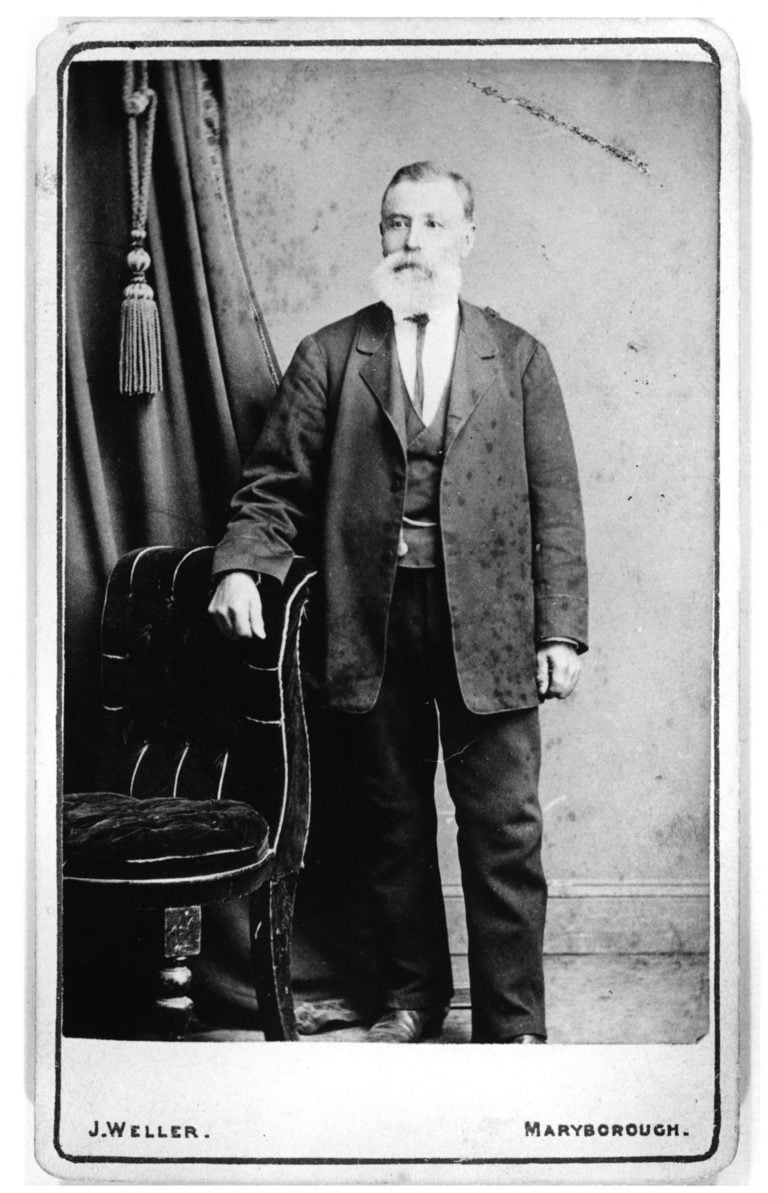What the Golden Fleece was to Jason and the Argonauts, the fabulous gold deposits of Ballarat were to the “Golden Greeks” of the mid 19th Century. Gold was discovered in Ballarat in 1851 and the gold rush that ensued drew around 6,000 diggers (miners) a week to Victoria as more gold deposits were discovered in other parts of the state.
The gold rush of the 1850s sparked the first major influx of Greeks and Cypriots to Australia. According to work done by TAS Psarakis of the Australian Hellenic Historical Society about 350 Greeks lived and worked in the Victorian goldfields between the 1850s and 1890s. Recent search, however, suggests the final figure could be higher than 1000.
The problem is that many of the Greeks were sailors and fishermen serving on British vessels who jumped ship once they reached Australian ports to get to the goldfields. Many of them Anglicised their names, most likely to avoid detection.
A January 1855 wanted notice in the Victorian Police Gazette for a “John Duffy”, for example, describes him as “a native of Corfu [with] dark complexion, dark hair, [and] dark grey eyes” who deserted Spray of the Ocean. A reward of £5 was offered for his capture. There were many such cases.
Among the early arrivals to Ballarat was Andreas Lekatsas, a native of Ithaca who was said to have jumped ship in 1851. Although it has not yet been verified, it is popularly believed that Lekatsas took part in the Eureka Stockade rebellion of 1854.
Georgios Paxinos who arrived in 1853 was to set up a shop in Ballarat and is considered to be the first Greek shopowner in Victoria. Others to follow a similar course were Lekatsas, Andreas Lagoyiannis, George Morfesis and Andreas Korouklis.
Some opened stores, while others ran taverns or small hotels. Some, like Jeremiah Metaxa (whose descendants still live in Ballarat), traded goods by foot or by cart.
Cypriots who also came for gold included Tony (Antonio Giovanni) Meringa/Miranda who came toVictoria in the late 1850s and settled n Daylesford, and George Kalenithidis (Calenides) who settled in Ballarat around the late 1860s.
READ MORE: Why Gold prices go up and down in five charts
In 1853, a Greek by the name of John Collins (aka Ioannis Kolalos) found gold at Cleopatra Reef at Mosquito Flat in Maryborough, 66km north of Ballarat. The area took the name of Grecian Gully as more Greeks gravitated to the area. In all, about 40 Greeks were to work the area. Many of the Greek miners who settled there were to marry British-Australian women.
But there were Greek-born women too in the goldfields, the wive and/or dependants of the miners. By 1871 there were 27 women registered as belonging to the “Greek Church” of whom 19 were born in Greece.
As many Greeks were also to mine at Tarnagulla, 40km north of Maryborough. In all Greek miners discovered five reefs in a two square kilometre area: the Corfu, Athens, Hellas, New Hellas and Greek’s Hill reefs.
Another notable Greek from Maryborough was also probably one of the first Greeks to play in a cricket “international”. Demetrius Torriano played from the Dunolly and Talbot cricket teams. He was top scorer for Maryborough in a match against the second English team to ever tour Australia.
READ MORE: Greeks of Ballarat, a peaceful haven for the community
Another Greek lover of sport was the Corfu-born Natale D’Angri (aka Natale Spiridion Giorgio Angri). His father was from Naples but his mother was a Corfu Greek- his obituary was to state “that he was not an Italian, but a Greek”. D’Angri, who arrived in 1852, worked with a group of Italian and Greek diggers at Italiana Hole in Ballarat. He made his fortune there and although he then toured Europe, he returned to Ballarat. In 1856, he married Elizabeth Watts and became a citizen in1861. He was a partner with Eureka Stockade leader Peter Lalor on two mines in Creswick, near Ballarat.
D’Angri, whose descendants still live in Ballarat, created the first Greek sporting club in Australia when he formed the Leventia Rowing Club on Lake Wendouree. Tiring of the demands of the gold industry, D’Angri bought land on the shores of the lake to set up a plant nursery. His 61kg pumpkin was on display at the 1886 Colonial and Indian Exhibition in Britain.
Like D’Angri some Greeks remained in Australia but, as the gold yields dwindled or went deeper, many were to leave and seek their fortunes elsewhere. By the 1870s Greek Orthodox church membership was to fall from 332 to 90. But the experiences of these pioneering Greeks in Australia would spur later generations to take another chance in the Lucky Country.
♦ In compiling this article, I am grateful for the help of Effy Alexakis and Leonard Janisweski, the authors of In Their Own Image: Greek-Australians, Hale & Iremonger, Sydney, 1998. The authors interviewed descendants and also conducted archival research. Thank you also to Jim Claven who provided valuable information and pointed me in the direction of Hugh Gilchrist’s Australians and Greeks, Volume I, The Early Years.











